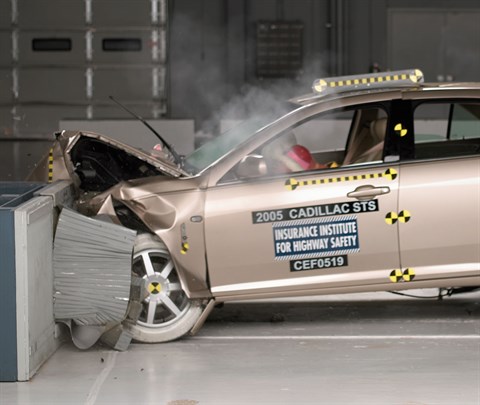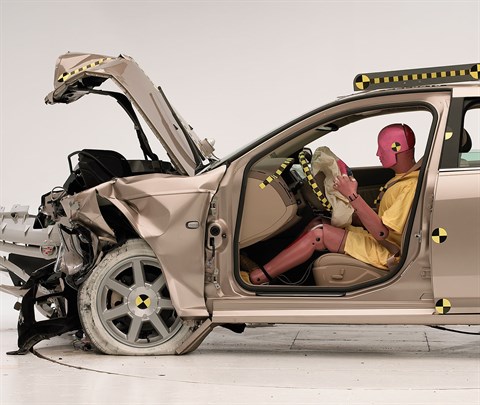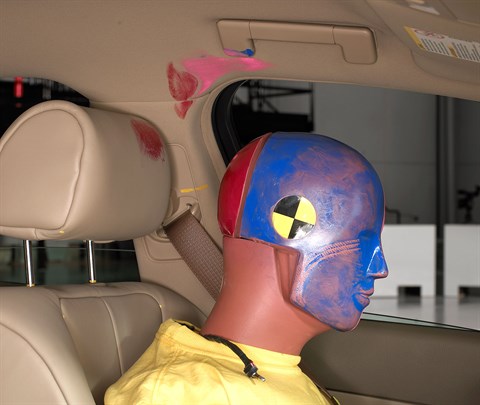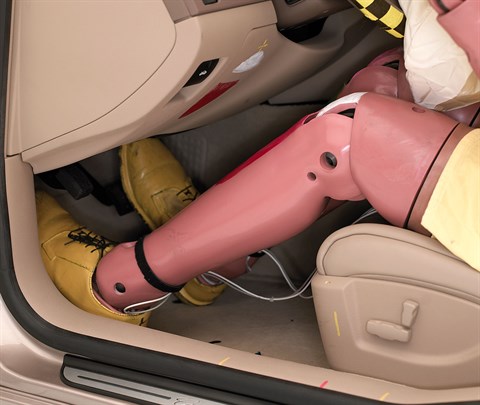Moderate overlap front: original test
Rating applies to 2005-11 models
Tested vehicle: 2005 Cadillac STS 4-door
The Cadillac STS was introduced in the 2005 model year as a replacement for the Seville.
| Evaluation criteria | Rating |
|---|---|
| Overall evaluation | |
| Structure and safety cage | |
| Driver injury measures | |
| Head/neck | |
| Chest | |
| Leg/foot, left | |
| Leg/foot, right | |
| Driver restraints and dummy kinematics | |

Action shot taken during the frontal offset crash test.

The dummy's position in relation to the steering wheel and instrument panel after the crash test indicates that the driver's survival space was maintained very well.

Smeared greasepaint indicates where the dummy’s head hit the B-pillar, roof rail, grab handle, and head restraint. Head accelerations from these hits were low.

Intrusion into the driver's space was minimal, and all leg and foot injury measures were low.
Head restraints & seats
Seat type: Seats without adjustable lumbar
| Overall evaluation | |
|---|---|
| Dynamic rating | |
| Seat/head restraint geometry |
About the head restraint & seat test
Currently, IIHS tests apply only to front seats.
